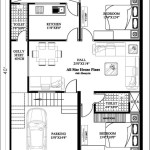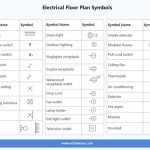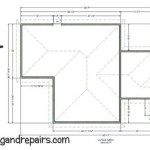Exploring Free Draw Room Floor Plan Options
The design and optimization of living spaces are crucial aspects of interior design and architecture. The draw room, historically a formal reception room, continues to hold significance in modern homes, often serving as a versatile space for relaxation, entertainment, and social gatherings. Creating an effective floor plan is the first step towards achieving a functional and aesthetically pleasing draw room. Fortunately, numerous free resources are available to assist homeowners and designers in this process.
A draw room floor plan outlines the arrangement of furniture, fixtures, and architectural elements within the room's dimensions. It dictates how space is utilized and influences the flow of movement, ambience, and overall functionality. A well-conceived floor plan maximizes space, enhances comfort, and reflects the desired aesthetic. The advent of technology has made floor plan creation more accessible through various online tools and software.
This article explores the realm of free draw room floor plan resources, examining their capabilities, limitations, and suitability for different design needs. It also discusses essential elements to consider when crafting a floor plan and provides guidance on leveraging free tools effectively.
Understanding the Importance of Draw Room Floor Plans
A draw room floor plan is not merely a visual representation of a room; it is a comprehensive blueprint for creating a functional and aesthetically pleasing space. Its significance lies in several key aspects:
Space Optimization: A well-designed floor plan maximizes the use of available space. It ensures furniture placement is strategic, avoiding overcrowding and facilitating easy movement. By carefully considering the dimensions of furniture and the room's layout, the floor plan helps create a sense of spaciousness, even in smaller draw rooms.
Functionality and Flow: The floor plan dictates the flow of movement within the room. It designates pathways and ensures that key areas are easily accessible. A well-designed floor plan avoids obstructions and bottlenecks, promoting a comfortable and seamless experience for occupants and guests. The arrangement of furniture should complement the room's purpose, whether it's for conversation, relaxation, or entertainment.
Visual Harmony: The floor plan contributes significantly to the visual harmony of the room. It considers the balance and symmetry of furniture placement, ensuring a visually appealing arrangement. A well-balanced floor plan creates a sense of order and calm, enhancing the overall aesthetic of the room. The arrangement of furniture can also emphasize focal points, such as a fireplace or a large window.
Communication and Collaboration: The floor plan serves as a crucial communication tool between homeowners, designers, and contractors. It provides a clear representation of the design intent, ensuring everyone is on the same page. The floor plan allows for easy discussion and modification of the design before any physical work begins, minimizing potential errors and costly revisions.
Cost Efficiency: By planning meticulously before purchasing furniture or undertaking renovations, the floor plan helps avoid unnecessary expenses. It allows for precise measurement and calculation of materials, ensuring that the budget is used effectively. Furthermore, it helps identify potential design flaws early on, preventing costly mistakes during the construction or furnishing process.
Exploring Free Online Draw Room Floor Plan Tools
The internet offers a plethora of free online tools and software that can assist in creating draw room floor plans. These tools range from basic sketching platforms to more advanced design software, catering to different levels of expertise and design needs. While free tools may have limitations compared to paid versions, they provide a valuable starting point for visualizing and planning a draw room layout.
Sketch-Based Tools: These tools typically offer a simple interface for drawing outlines of rooms and adding basic furniture elements. They are ideal for creating quick sketches and exploring different layout options. Examples include online graph paper generators and simple drawing applications.
2D Floor Plan Creators: These tools provide more advanced features for creating accurate 2D floor plans. They often include libraries of furniture symbols, pre-designed templates, and measurement tools. Some popular options include Floorplanner, RoomSketcher (free basic plan), and SmartDraw (free trial). These tools allow users to input room dimensions, add walls, doors, and windows, and then drag and drop furniture symbols into the plan. They offer a more detailed and realistic representation of the room layout compared to sketch-based tools.
3D Floor Plan Creators (Limited Free Functionality): Some floor plan software offers limited free versions that allow users to create basic 3D visualizations of their draw rooms. While the free versions may have restrictions on features or project size, they can still provide a valuable glimpse into the room's spatial arrangement and overall aesthetic. Examples include Planner 5D (limited functionality free version) and Sweet Home 3D (open-source). These tools allow users to create a 3D model of the room, experiment with different furniture styles and colors, and visualize the space from different angles.
Home Design Websites with Planning Tools: Many home design websites offer free planning tools as part of their content. These tools may be less comprehensive than dedicated floor plan software, but they can still be useful for exploring basic layout ideas and visualizing furniture arrangements. These websites often feature articles, photos, and design inspiration to complement the planning tools.
Important Considerations when choosing free tools: While these tools offer free services, it's important to review their features. Consider the user-friendliness, feature availability, output resolution, and storage capacity. Some tools require registration, have watermarks, or limit the number of projects a free user can save.
Essential Elements to Consider in a Draw Room Floor Plan
Regardless of the tool used, several essential elements must be considered when creating a draw room floor plan to ensure a functional and aesthetically pleasing space.
Room Dimensions and Architecture: Accurate room dimensions are the foundation of any floor plan. Measure the length, width, and height of the room, as well as the size and location of windows, doors, and any architectural features such as fireplaces or built-in shelves. These measurements are crucial for creating an accurate representation of the space and ensuring that furniture fits properly.
Furniture Selection and Placement: Consider the type and size of furniture needed for the draw room. This may include sofas, chairs, coffee tables, side tables, entertainment units, and bookshelves. Measure the dimensions of each piece of furniture and plan its placement carefully. Consider the traffic flow and ensure that furniture is arranged to facilitate comfortable movement and conversation.
Focal Points and Circulation: Identify the focal points of the room, such as a fireplace, a large window, or a piece of artwork. Arrange furniture to emphasize these focal points and create a sense of visual balance. Plan for clear circulation paths around furniture to ensure that people can move easily through the room. Avoid blocking doorways or creating obstacles in the flow of traffic.
Lighting and Electrical Outlets: Consider the placement of lighting fixtures and electrical outlets. Plan for adequate lighting to illuminate the room effectively, both during the day and at night. Consider the use of natural light, as well as artificial light sources such as overhead lights, lamps, and sconces. Ensure that electrical outlets are conveniently located to power lamps, electronics, and other devices.
Scale and Proportion: Pay attention to scale and proportion when selecting and arranging furniture. Choose furniture that is appropriately sized for the room. Avoid using furniture that is too large or too small, as this can create a sense of imbalance. Consider the proportions of the room and arrange furniture to create a harmonious and visually appealing space.
Accessibility: Make sure that the floor plan is accessible for everyone, including people with disabilities. Consider the width of doorways and hallways, and ensure that there is enough space for wheelchairs or walkers to maneuver. Avoid creating obstacles that could hinder movement or make it difficult for people to access different areas of the room.
By considering these essential elements, it is possible to create a draw room floor plan that meets the specific needs of the user, is functional, and aesthetically pleasing.

Floor Plan Creator And Designer Free Easy App

Best Free Room Planner Tools

Draw Floor Plans With The Roomsketcher App

Draw Floor Plans With The Roomsketcher App

Floor Plan Creator Planner 5d

How To Get Started With Homestyler A Free Floor Planning Tool

Free Editable Open Floor Plans Edrawmax

Draw Floor Plans With The Roomsketcher App

Draw A Room From The Floor Plan Medibang Paint Free Digital Painting And Manga Creation

Floor Plan Free Plans Drawing
Related Posts








